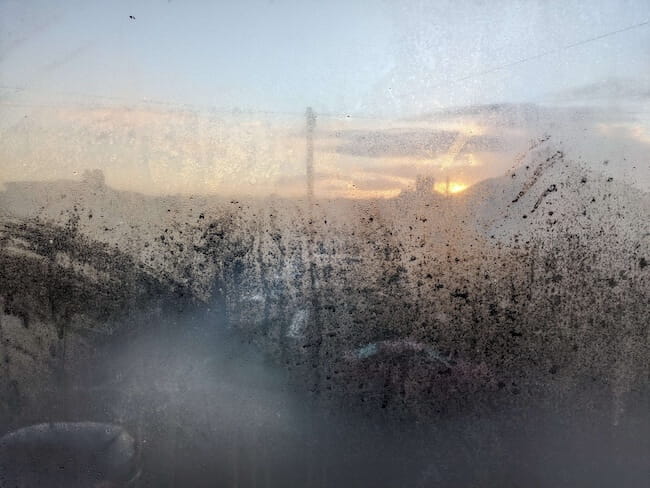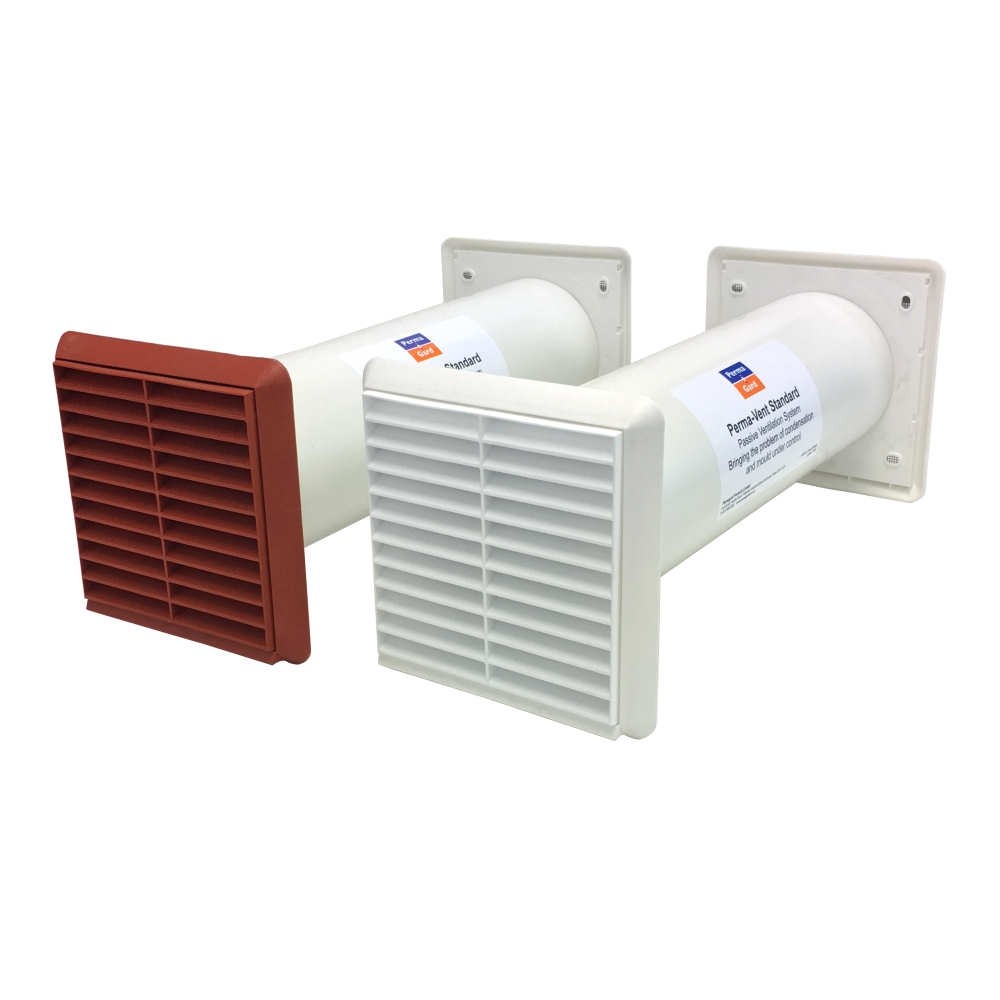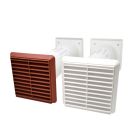Help & Advice Articles, Videos and How-to-Guides
Filter Articles

How to Stop Window Condensation
Do you wake up in the morning to find your bedroom windows streaming with condensation?
It’s certainly not the best way to start the day. Unfortunately, many of us experience the pools of water on our windowsills and black mould around the frames, especially in the colder months.
Window condensation is an all-too-common problem in the UK when it really doesn't need to be. The good news is that stopping condensation on windows is easier than you might think. In this article, we provide details on what causes it and give you some options for preventing it.
What causes window condensation?
When warm, moist air comes into contact with a cold window, it releases some moisture onto the glass as water droplets. This is window condensation.
Windows are impermeable, which means liquid can’t travel through them. This is true of both single and double-glazed windows.
So, where does this water vapour in the air come from? Well, everyday activities like cooking, showering and drying clothes all generate moisture. This gets into the air and has few ways of escaping your home.
There is a precise point when condensation occurs which is known as the dew point. This point is reached when the air is cooled to a specific temperature, at which point it releases water.
The dew point on a window will vary, depending on internal humidity, internal temperature and the surface temperature of your window. The colder the window, the easier it is for the dew point to be met. You’ll often find condensation forming initially at the bottom and edges of windows as these are the coldest areas.

What causes it overnight / morning?
There are a few reasons why you might get more condensation on windows in the morning. The main reason is that the temperature difference between inside your home and outside increases overnight, essentially making your windows colder surfaces.
When you pull curtains at night, what you’re effectively doing is stopping the internal heat from directly heating your windows. This makes them a colder surface again, and the dew point is more easily met. You’re also less likely to have windows open at night. This means that the moisture in the air created in the day turns into condensation on your windows overnight.
In the case of bedrooms, you generate both warmth and moisture from breathing, increasing the humidity of the room. This is a perfect combination for overnight condensation that you’ll see on your windows in the morning.
How to stop condensation on windows overnight
Luckily the principles of stopping window condensation remain the same and we’ll cover the solutions later in this article. But essentially if you’re reducing condensation in the daytime then there should be less moisture in the air to condense overnight. There is still a chance that bedrooms will be affected, but the amount of condensation shouldn’t be excessive.
Condensation on windows in winter
Window condensation is usually a bigger issue in colder months. At Permagard, we receive hundreds of calls from people wanting to know how to stop condensation on their windows in winter.
During the winter months, you’re more likely to have the heating on which warms the air in your home. Now, warm air actually holds more moisture than cold air, so humidity is higher. You’re also less likely to have windows open in the winter, so the moist air can’t escape. The surface temperature of your windows is also much lower. Together this means there’s more moisture in your home that will be deposited more easily onto colder surfaces like windows and outside walls. The colder the night, the more condensation you’re likely to experience.
How to stop condensation on windows in winter
Opening windows is not such a viable option in winter and you’re less likely to be able to dry clothes outdoors. This means you probably need to prioritise a heat recovery vent for rooms where you dry washing indoors, or have a tumble drier. That way, you can remove the moist air and replace it with fresh, drier air without worrying about window condensation.
Is window condensation bad?
It’s not much fun wiping down your windows each morning to get rid of the condensation, but is it actually bad? Beyond the inconvenience of manually removing condensation, there are more serious issues to understand.
Small amounts of condensation are to be expected and shouldn’t cause any major problems; however, excessive condensation on windows is more of a concern.
Window condensation can lead to black mould growth on and around your windows. Mould is a fungus that needs moisture for its spores to grow. If you can reduce the moisture in your home, then you reduce mould growth. The main concern with black mould is the health risks, where it can exacerbate existing conditions. It is more of a concern in bedrooms where you could potentially be breathing in spores throughout the night.
Condensation and mould can also damage your internal decoration, meaning you need to repaint or re-wallpaper problem areas. Excessive condensation on windows will start to damage your windowsills, and even your window units.
If you’re getting lots of condensation on the internal side of your windows, then there’s a chance that you’ll also be getting condensation in other areas of your home that are less visible. This can lead to further instances of black mould and potentially more significant structural damage.
Condensation in windows
Condensation on the inside of double-glazed windows is a different issue from what we’re focussing on in this article. When you have condensation in windows, it suggests that the units have failed. It’s likely a fault has allowed some moisture to get between the two panes of glass and form condensation. You are likely to require new windows to resolve this issue.
Preventing condensation on windows
To prevent condensation on windows, you have several options. These range from small practical changes you can make immediately to installing a passive vent or a whole house ventilation system. And yes, we’ve heard all the weird and wonderful solutions here at Permagard: from washing up liquid to condensation catchers to miracle sprays. Our focus is on practical, logical behaviour changes and proven ventilation solutions.
Our Top Tips
Practical
- Cover pans when cooking and use an extractor fan if you have one
- Don’t dry your clothes indoors
- Take shorter showers with doors closed and windows open when possible
- Open windows at opposite sides of your home for cross ventilation
- Open trickle vents on double-glazed windows
Longer term solutions
- Kill any mould with a mould wash
- Apply an anti mould paint to stop mould growth from coming back
- Ensure there is no underlying damp issue
- Install passive vents in bathrooms, kitchens and other problem rooms
- Consider a whole house ventilation system matched to your needs – we offer an overview below to help you select the right ventilation option
Window Trickle Vents and Condensation
Many modern double-glazed window units feature trickle vents. These vents are located at the top of the window as part of the frame and allow air from outside to enter your home at a low rate. They represent a form of background ventilation that works on the passive ventilation principle.
Trickle vents won’t completely solve the issue but will help with ventilation and in turn help reduce window condensation. It’s important to note that trickle vents cannot be retrofitted so if your doubled-glazed windows don’t feature them then you’d need to get new ones installed. You’ll also need to consider other forms of ventilation to work alongside them.
Ventilation systems for reducing condensation on windows
The best option for getting rid of condensation permanently is installing a ventilation system in your home. In the below section, we’ll briefly highlight the systems available to help prevent window condensation.
You can read about how to effectively ventilate your house in much more detail in our how to guide.

Passive ventilation
Passive ventilation uses natural forces to encourage airflow through your property. These vents contain no moving parts, making them very affordable and easy to maintain. Our Perma-vent is less than £20 excluding VAT. They are easy and quick to install yourself and will get to work right away on window condensation in single rooms.
Heat recovery systems
Heat Recovery ventilation systems work by replacing the moist air in your home with filtered, fresh air from outside. They include a heat exchange unit that captures the heat from the warm air in your home as it leaves and uses it to warm the incoming fresh air. This significantly reduces the amount of heat wasted and reduces your energy bills.
The Kair Heat Recovery Ventilation Unit recovers up to 86% of heat. This makes it a highly effective solution to condensation in a single problem room. Click for an overview of what's involved in the installation of Kair unit.
Positive input ventilation
Positive input ventilation or PIV systems work by continuously replacing the moist air in your home with fresh, filtered air from outside. They are usually installed in your loft and provide whole-house ventilation. Window condensation in your home should be eradicated within a couple of days of installation.
Permagard stock Monsoon Positive Pressure Ventilation systems that offer PIV for houses with lofts and ventilation units for flats without a loft space. Both heat the incoming fresh air. The Nuaire Drimaster Eco PIV system is a highly effective and energy efficient version that gets rid of condensation and improves air quality in your home.
Remember you can also get rid of any black mould using our mould wash.
For more information about the pros and cons of positive input ventilation, see our guide.
How to stop condensation on bedroom windows
Bedroom windows can be prone to condensation because this is the room that you usually keep warm at night. You will also create additional moisture in the air from breathing.
Many people are nervous about installing bedroom ventilation because of concerns over noise, draughts and being kept awake. There are various options from whole house systems to near-silent single room options.
If you have condensation problems in your bathroom then read our guide to avoiding condensation and treating mould in your bathroom.
Dehumidifiers for window condensation
Dehumidifiers can be effective at removing moisture from the air in single rooms, but they aren’t necessarily a long-term or energy-efficient solution to window condensation. These units can help reduce humidity around specific activities such as cooking, and in the event you need to dry clothes indoors. Dehumidifiers are less practical for reducing window condensation across your home.
If the humidity is high throughout the house, you would require quite a few powerful dehumidifiers to reduce the moisture enough to stop window condensation. A much more cost-effective option is mechanical ventilation, which removes humid air and replaces it with fresh, drier air - a much wiser long-term investment.
Permagard – Over 35 Years of Experience in Condensation Control
You should now have a good idea of the best ventilation methods to stop window condensation. You can continue to browse our full range of condensation control products. The UK Government also has a guide to preventing condensation and mould.

